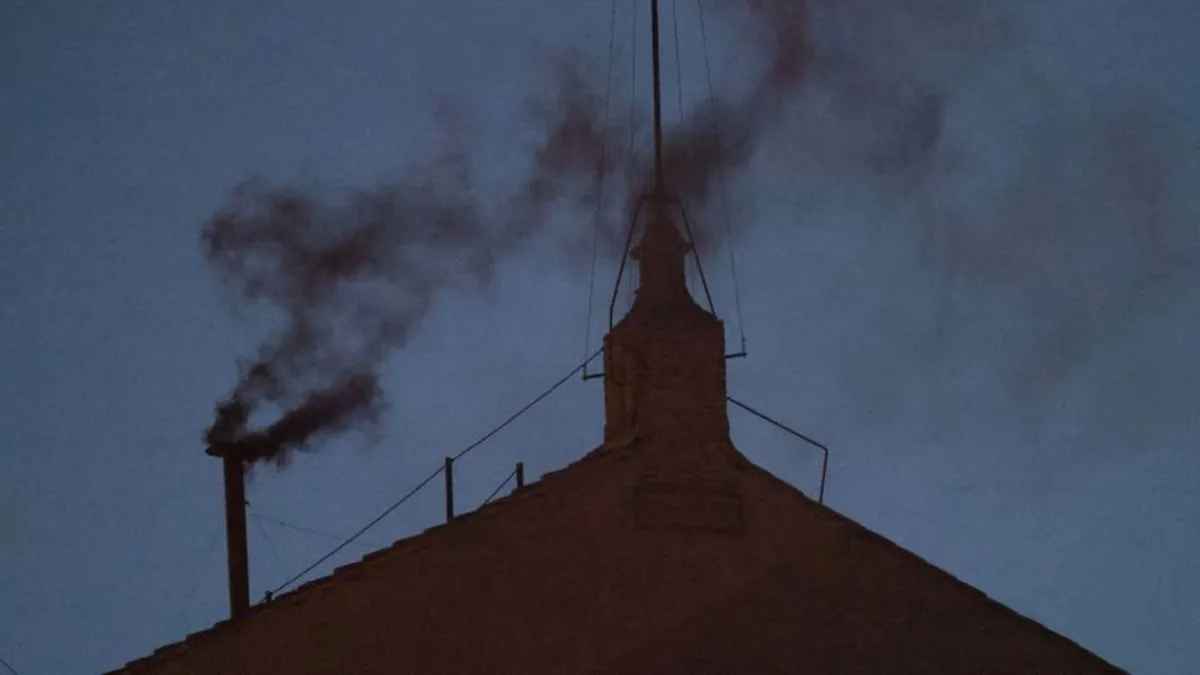
On Wednesday, black smoke billowed from the chimney of the Sistine Chapel, signaling that the cardinals did not elect a new pope on the first day of the conclave. As the Roman Catholic Church awaits a new leader, the absence of a clear frontrunner complicates the proceedings. The cardinals will continue to cast votes on Thursday in a series of highly secretive ballots until they choose a successor to the late Pope Francis.
The 133 voting cardinals have returned to the Santa Marta residence within the Vatican, where they will remain sequestered from the outside world. This decision to isolate themselves is crucial, as the global community of 1.4 billion Catholics will have to remain patient, with no indication of who will lead the church moving forward. Each cardinal has taken an oath of secrecy and surrendered their electronic devices to avoid any external communication, leaks, or surveillance. They will regain access to their phones only after the conclave concludes, as breaking this oath results in automatic excommunication.
Outside the Vatican, tens of thousands of people gathered at St. Peter’s Square as evening fell, eagerly watching the smoke signals emanating from the burning ballots. Although it would be highly unusual to select a new pope after just one vote, the anticipation among the crowd remained palpable. “We tried to manifest it, but we kind of knew it wouldn’t be tonight,” said Carla Peat, a 19-year-old who traveled from Scotland with friends for the conclave. Despite the uncertainty, they planned to return to the square on Thursday, hopeful for a new leader.
The past two popes, Benedict XVI and Francis, were appointed on the second day of voting, while John Paul II was selected on the third day. In the coming days, the cardinals will conduct up to four rounds of voting each day—two in the morning and two in the afternoon. If no new pontiff is chosen by the fifth day, which falls on Sunday, the cardinals will take a break from voting for prayer, quiet reflection, and informal discussions.
This conclave is set to be a contest between those favoring the continuation of Pope Francis’ reforms and those advocating for a return to a more traditional papacy. Two distinct factions of cardinals are emerging, labeled as “unity”—those seeking a more predictable papacy—and “diversity”—those desiring a leader who will closely follow Francis’ vision. This division occurs amid ongoing clerical sexual abuse scandals that have deeply affected the Catholic Church, with many within the institution demanding substantial reforms.
While there is no formal list of papal candidates, several cardinals are frequently mentioned as frontrunners. Among them are Filipino Cardinal Luis Antonio “Chito” Tagle, American Cardinal Robert Prevost, and Italian Cardinal Pietro Parolin, the former Vatican Secretary of State. The unpredictability surrounding this conclave can be attributed to Pope Francis’ significant reshaping of the College of Cardinals, which has resulted in a more diverse representation within the church. As a result, many cardinals may not know each other well and had to wear name badges during their pre-conclave meetings.
As the world watches, the next few days will be pivotal in determining the future direction of the Catholic Church and its leadership.